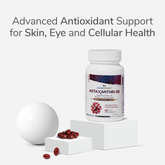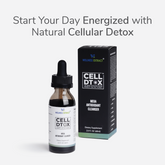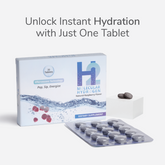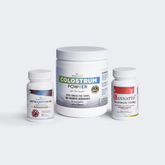Estimated Reading Time: 8 minutes
|Your Diet Missing the “Sunshine Vitamin”?
Vitamin D isn’t just about strong bones—this essential nutrient plays a role in how you feel, how you move, and how your immune system holds up. But here's the catch: your body doesn’t make enough of it on its own (unless you live on a beach and eat salmon every day).
So, what’s a wellness-loving human to do? Easy. Load up on foods rich in vitamin D—because sunshine isn’t always a reliable routine
|
Quick Tip: While sunlight helps your skin produce vitamin D, factors like sunscreen, age, skin tone, and geography can limit how much you make. That’s why dietary sources of vitamin D matter! |
Best Foods High in Vitamin D (That Aren’t Just Salmon)
Explore both natural and fortified sources of vitamin D to support your daily needs:
1. Fatty Fish
Vitamin D content: ~400–700 IU per 3-oz serving
These fish are practically swimming in vitamin D.
Bonus: they’re also packed with omega-3 fatty acids—great for heart and brain health.
Best picks:
-
Salmon
-
Mackerel
-
Sardines
-
Trout
-
Tuna
-
Herring
Fun Fact:
Wild-caught salmon has up to 5 times more vitamin D than farmed salmon. Nature knows best!
How to eat it:
Grill it, bake it, put it in sushi, toss it in a salad—fatty fish is one of the tastiest ways to boost your D.
2. Egg Yolks
Vitamin D content: ~35 IU per yolk
Yes, the yolk is where the sunshine lives. One of the easiest ways to sneak in extra vitamin D—especially at breakfast. It also provides healthy fats and protein.
Bonus Tip:
The vitamin D content in eggs depends on what the chicken eats. Free-range or pasture-raised hens usually lay eggs with more vitamin D.
3. Fortified Foods
Vitamin D content: ~100-150 IU per serving (varies)
Fortified foods are clutch when your regular meals aren’t cutting it. These are convenient and easy to include in your diet:
-
Fortified milk and plant-based alternatives (soy, almond, oat milk)
-
Fortified breakfast cereals
-
Fortified orange juice with added vitamin D
-
Fortified yogurt
-
Margarine
Just check the label—some brands add more D than others.
Did You Know:
In the 1930s, rickets (a bone-softening disease caused by vitamin D deficiency) was so common that governments started adding vitamin D to milk. It worked—rickets almost disappeared!
4. Cod Liver Oil
Vitamin D content: A whopping ~1,360 IU per tablespoon
This old-school supplement is one of the most concentrated natural sources of vitamin D.
Warning: Handle with Care!
Cod liver oil also contains high levels of vitamin A, which you can get too much of. So go easy—and talk to a healthcare provider before using it daily.
Not a fan of the taste? Capsules make it easier to swallow (literally and figuratively).
5. Mushrooms (UV-Exposed)
Vitamin D content: ~400–700 IU per ½ cup
Here’s a fun fungi fact—mushrooms can make vitamin D when exposed to sunlight, just like your skin! When hit with UV rays, they produce vitamin D2. Sure, it’s not as potent as D3 (the kind found in animal sources), but it still gives your body a healthy boost.
Even better? They’re the only plant-based natural source of vitamin D, making them an excellent option for vegans and vegetarians looking to boost their intake naturally.
Top mushroom picks:
-
Maitake
-
Morel
-
Shiitake (if UV-exposed)
-
Portobello (UV-treated)
Do You Know?
Regular store mushrooms grown in dark farms won’t give you much D — check the label for "UV-exposed" or "Vitamin D-rich."
6. Cheese
Vitamin D content: ~10–20 IU per ounce (not huge, but still counts!)
Cheese alone won’t hit your daily goal, but every sprinkle helps—especially:
-
Swiss
-
Cheddar
-
Monterey jack
-
Fortified cheese slices
Tip:
Opt for natural, minimally processed cheese rather than processed cubes or spreads.
7. Beef Liver
Vitamin D content: ~42 IU per 3-ounce serving
Not everyone loves liver, but it’s a nutrient-dense powerhouse in just a small portion. It also contains iron, vitamin A, and protein.
8. Canned Fish
Vitamin D content: ~45 IU to 190 IU per 100 g
Who knew something in a tin could be so nutritious?
Canned sardines, tuna, and salmon are not only budget-friendly and shelf-stable—they’re sneaky sources of vitamin D.
Did You Know?
Canned fish contains bones (don’t worry—they’re soft), which also means a bonus dose of calcium to go with your vitamin D. Two birds, one bite!
Now that you know the top foods, here’s how to turn that knowledge into easy, everyday habits.
How to Get Vitamin D (Without Overthinking It)
You don’t need to obsess over milligrams or micrograms. Here’s a balanced approach to meeting your needs:
-
Add one fatty fish meal per week
-
Scramble eggs for breakfast a few times a week
-
Choose fortified drinks or cereals
-
Snack on mushrooms or toss them in pasta
-
Soak up some safe sun (10–15 mins/day without sunscreen)
|
Science Says Most adults need 600–800 IU of vitamin D daily, though some people (especially those with low blood levels or limited sun exposure) may need more—up to 3,000 IU, per medical advice. |
Bonus Tip: Make a Vitamin D-Rich Smoothie
Try this combo:
-
Fortified oat milk
-
A scoop of vitamin D-fortified protein powder
-
Frozen mango
-
Chia seeds
-
UV-exposed mushrooms (yes, you can sneak in a few!)
Blend and sip your sunshine!
A Quick Reminder on Cooking:
Vitamin D is fairly heat-stable during most cooking methods, especially at temperatures under 100°C. For foods like mushrooms and egg yolks, gentle cooking helps preserve even more of their natural vitamin D content.
Also Read: 11 Dairy-Free Protein Shakes: Nutritionist-Approved Recipes
Who’s Most Likely to Need More Vitamin D?

Some people are more at risk than others—here’s who should keep a closer eye:
-
People with darker skin tones
-
Those who wear full skin coverage for religious or cultural reasons
-
Older adults (skin becomes less efficient at converting sunlight to vitamin D)
-
Vegans or vegetarians
-
People with digestive disorders (like Crohn’s or celiac)
Warning:
Deficiency can sneak up on you—causing fatigue, bone pain, mood changes, or muscle weakness. If you're concerned, ask your doctor about a 25(OH)D blood test.
Also Read: The Fat-Soluble Vitamins: Vitamins A, D, E, & K
Final Word – Eat Smart, Stay Bright
Vitamin D isn’t just about one magic food — it’s about a smart mix of sun, diet, and consistency.
Whether you're vegetarian or non-vegetarian, there’s a way to fit foods rich in Vitamin D into your regular meals without making major changes.
Just a few tweaks — an extra egg in the morning, some sunlight on your skin, or fortified milk in your tea — can help your body feel stronger, fresher, and better every day.
Key Takeaways
-
Vitamin D is essential for bone, immune, and mood health.
-
If you’re wondering how to get vitamin D, start with food—some of the best sources of vitamin D include fatty fish, egg yolks, fortified foods, UV-exposed mushrooms, cod liver oil, cheese, beef liver, and canned fish.
-
Most adults need 600–800 IU/day.
-
Sunshine helps—but food fills the gaps, especially in winter or cloudy regions.
-
Watch for signs of deficiency, especially if you're in a high-risk group.
Disclaimer: This blog is for informational purposes only and does not provide medical advice. Always consult a healthcare professional before making changes to your diet or health routine. Individual results may vary.
References
- National Institutes of Health. Vitamin D. National Institutes of Health. Published 2024. Available at: https://ods.od.nih.gov/factsheets/VitaminD-HealthProfessional/ (Accessed on: 15 july 2025)
- United States Department of Agriculture. Nutrients: Vitamin D (IU). USDA. https://www.nal.usda.gov/sites/default/files/page-files/Vitamin%20DIU.pdf (Accessed on: 15 july 2025)
- Jakobsen J, Smith C, Bysted A, Cashman KD. Vitamin D in Wild and Farmed Atlantic Salmon (Salmo Salar)—What Do We Know? Nutrients. 2019;11(5):982. doi:https://doi.org/10.3390/nu11050982 (Accessed on: 15 july 2025)
- Barnkob LL, Argyraki A, Jakobsen J. Naturally enhanced eggs as a source of vitamin D: A review. Trends in Food Science & Technology. 2020;102:62-70. Available at: doi:https://doi.org/10.1016/j.tifs.2020.05.018 (Accessed on: 15 july 2025)
- Brower S, Dorsey J, Malvetti K, Fagan J. Taste and Nutritional Differences of Non-Factory Farmed vs. Factory Farmed Eggs and Poultry.; 2013.Available at: https://rucore.libraries.rutgers.edu/rutgers-lib/45132/PDF/1/play/ (Accessed on: 15 july 2025)
- Kühn J, Schutkowski A, Kluge H, Hirche F, Stangl GI. Free-range farming: A natural alternative to produce vitamin D-enriched eggs. Nutrition. 2014;30(4):481-484. Available at: doi:https://doi.org/10.1016/j.nut.2013.10.002 (Accessed on: 15 july 2025)
- Sizar O, Khare S, Goyal A, Bansal P, Givler A. Vitamin D Deficiency. PubMed. Published 2023.Available at: https://www.ncbi.nlm.nih.gov/books/NBK532266/ (Accessed on: 15 july 2025)
- PubChem. Cod Liver Oil. pubchem.ncbi.nlm.nih.gov.Available at: https://pubchem.ncbi.nlm.nih.gov/compound/Cod-Liver-Oil (Accessed on: 15 july 2025)
- Haytowitz DB. Vitamin D in Mushrooms.; 2009.Available at: https://www.ars.usda.gov/ARSUserFiles/80400525/Articles/AICR09_Mushroom_VitD.pdf (Accessed on: 15 july 2025)
- Nölle N, Argyropoulos D, Ambacher S, Müller J, Biesalski HK. Vitamin D2 enrichment in mushrooms by natural or artificial UV-light during drying. LWT - Food Science and Technology. 2017;85:400-404. Available at: doi:https://doi.org/10.1016/j.lwt.2016.11.072 (Accessed on: 15 july 2025)
- Phillips KM, Horst RL, Koszewski NJ, Simon RR. Correction: Vitamin D4 in Mushrooms. PLOS ONE. 2021;16(6):e0253992. Available at: doi:https://doi.org/10.1371/journal.pone.0253992 (Accessed on: 15 july 2025)
- American Dairy Association North East. Cheese Health Benefits & Nutrition Facts | ADANE. American Dairy Association North East.Available at: https://www.americandairy.com/health-wellness/benefits-of-dairy/cheese/ (Accessed on: 15 july 2025)
- Haug A, Vermeer C, Ruud L, Monfort-Pires M, Grabež V, Egelandsdal B. Nutrient-Optimized Beef Enhances Blood Levels of Vitamin D and Selenium among Young Women. Foods. 2022;11(5):631. Available at: doi:https://doi.org/10.3390/foods11050631 (Accessed on: 15 july 2025)
- U.S. Department of Agriculture. Fish, sardine, Atlantic, canned in oil, drained solids with bone. USDA. Available at: https://fdc.nal.usda.gov/food-details/175139/nutrients (Accessed on: 15 july 2025)
- Rashidi L, Mazaheri M, Noodeh HR. Effect of cooking time and temperature on vitamin D3 amount in the fortified sunflower oil. Advances in the Standards & Applied Sciences. 2023;3(1):3-10.Available at: https://journal.standard.ac.ir/article_176400_6806d370859e48773360312aac8b4fbf.pdf (Accessed on: 15 july 2025)













![Top 5 Best Vitamins for Men in Their 30s [Backed by Science!]](http://wellnessextract.com/cdn/shop/articles/Vitamin_for_men_8fe0fe21-19b1-4020-b895-dc104449637e_165x.webp?v=1765878148)
























